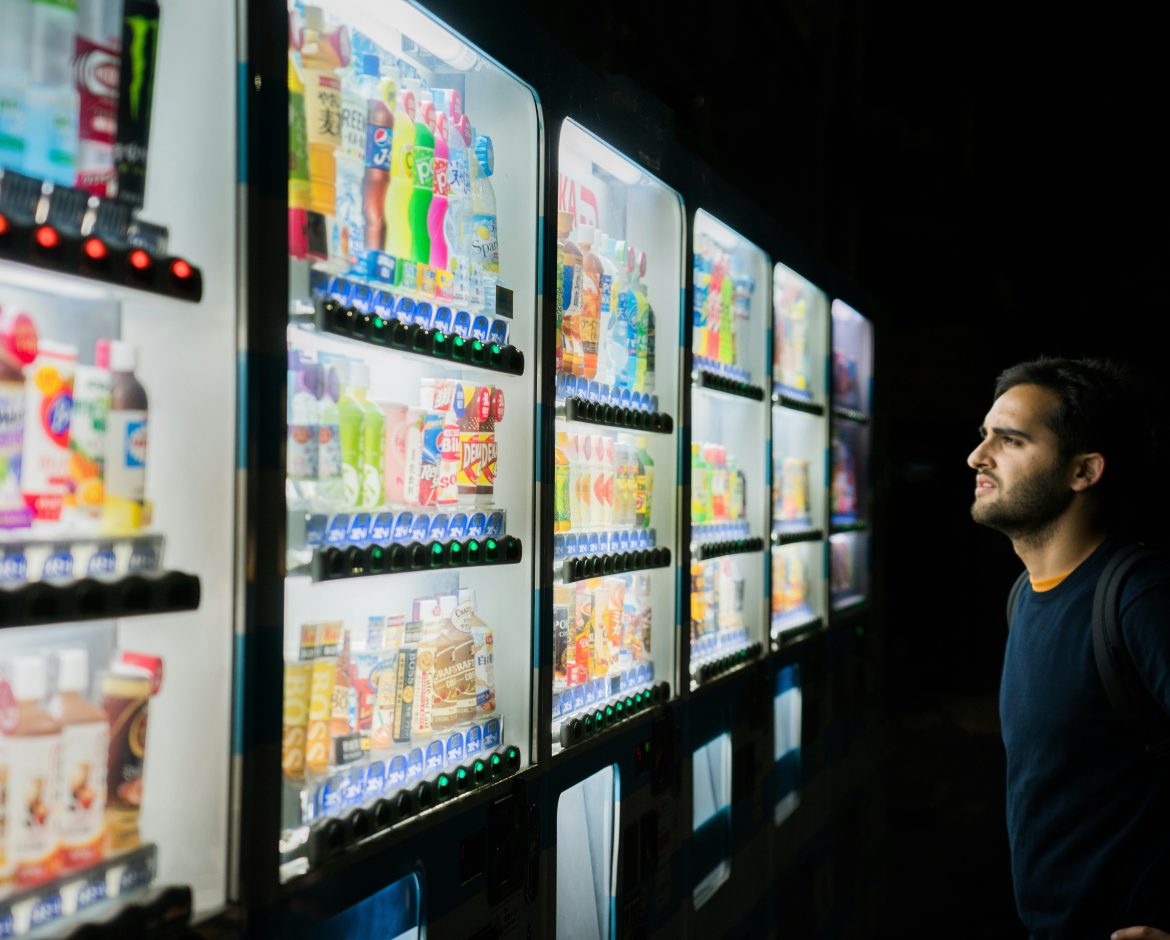Time and convenience are incredibly important today. We value them in our personal lives, but also at work—especially when we’re hungry, thirsty, or in need of useful products. Often, we don’t have much time in the morning to prepare lunch, and there’s no canteen or shop available at the workplace. That’s when vending machines become an invaluable support. But what exactly are these devices, how do they work, and why is it worth investing in a vending machine for your business?
Vending Machines – A Global Hit with a Promising Future
Vending machines are cabinet-like devices that come in various sizes and allow for the self-service purchase of various products. The term comes from the word “vending,” and the entire process—from selecting the item to paying and receiving it—requires no cashier or staff.
Many people still associate vending machines solely with sweet or salty snacks and low-quality coffee or tea. However, such machines are largely a thing of the past. According to independent research, vending machines are becoming increasingly popular not only in Europe but around the world. The global vending machine market is currently worth over 25 billion dollars and is projected to reach 26.5 billion dollars by the end of 2028.
To better understand this demand, consider this: in Poland, there is one vending machine for every 950 people. In Western Europe, that figure drops to around 100 people per machine. Japan remains the global leader in vending machine usage, with one machine for every 23 people. The growing popularity of this sales model is driven by several key factors.
Vending Machines – Fast Shopping, Quality, and Great Prices
A vending machine allows users to make purchases not only conveniently, but also without leaving the building—in just a few seconds. Because the devices can be stocked with any kind of product, it’s possible to perfectly match offerings to user preferences, whether those users are employees or visitors.
While vending machines were once mostly associated with sweets and chips, they now often offer freshly prepared salads, soups, yogurts, healthy juices, smoothies, and other nutritious food items, including ready-made meals and organic options.
These vending machines are an excellent alternative to workplace cafeterias, which are far more expensive to operate and require longer breaks to use. Meals and fresh products from vending machines are usually cheaper and can be restocked daily to ensure freshness. Today’s modern vending machines are equipped with refrigeration systems, allowing them to store temperature-sensitive items safely.
Vending Machines – Not Just for Food
While food and beverages are the most popular products sold via vending machines, these automatic cabinets can offer many other items. They’re a great way to sell cosmetic products at train stations, souvenirs at tourist spots, or hygiene and safety products. PPE vending machines are especially useful in high-traffic areas, hospitals, and medical facilities.
Modern Payment Methods in Vending Machines
Traditional vending machines often required coin insertion—which was notoriously unreliable. Many users turned away from these devices due to lost money or unrecognized payments. Today, you can pay for your selected product with cash, card, or smartphone, eliminating concerns about faulty coin mechanisms.
From a business owner’s or property manager’s perspective, vending machines offer great flexibility. You can buy a machine and fully customize it. However, you can also opt to rent vending machines through professional vending providers. This is ideal if you’re unsure whether the solution fits your facility or only need a machine for a limited time.
A professional vending company will provide guidance on usage and maintain the machine regularly. Modern vending machines are energy-efficient, come with dedicated software for accounting and inventory tracking, and can easily integrate with Windows or Linux systems. Both purchasing and rental options are available on our website.

